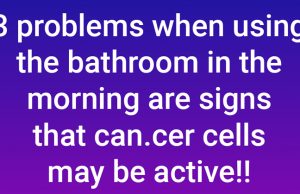9 Reasons why the doors in public toilets don’t reach the floor

A public restroom surely isn’t the most pleasant place we have to visit. When using a public toilet, you have probably wondered why the doors don’t reach the floor and why they prevent you from doing your private business privately? The answer is, it’s not done to embarrass you. There are actually several very good reasons for it and we at Bright Side wanted to tell you about them.
9 Reasons Why the Doors in Public Toilets Don’t Reach the Floor
1. It’s easier to clean.
Due to the demand for public toilets, it’s necessary to wash them several times a day. By having a gap at the bottom, bathroom partitions are much easier to clean, as is the whole restroom. You can hose down or even powerwash a restroom that has partitions with gaps at the bottom because the water has somewhere to run even if there’s not a drain in a given stall.
2. In case of an accident, you can get help easily.
If someone loses consciousness in a fully enclosed bathroom, it may take hours for someone to notice. If this happens in a stall with a gap at the bottom, the odds are good someone will notice much quicker, which is important in instances where every second can mean the difference between life and death. Instead of having to break down the door, a first responder can crawl through the gap at the bottom of the partition and unlock the door to render help.
3. It helps curb inappropriate behavior.
Because people can partially see into a bathroom stall that has a gap at the bottom, this type of partition is a natural deterrent to undesirable behavior, such as someone spray painting the stall with graffiti.
4. The construction is cheaper.
Building partitions that extend from the floor to the ceiling requires a more precise design and the use of various materials, which would increase the total cost. For a business owner, it will always be more cost effective to buy and install doors with gaps.
5. There’s better odor ventilation.
In a fully enclosed bathroom it becomes difficult for unpleasant odors to disappear. With gaps above and under the bathroom stalls, air circulates much better and bad smells disappear faster.
6. It’s easy to see if it’s available.
If the stall is fully enclosed, we always risk experiencing an awkward moment when trying to open a stall that is occupied or having to hold it from the other side, whichever is worse. With the gap below the door, a person can see if the toilet is vacant or not.
7. It’s a possible escape route.
Imagine that the lock jams: if the stall is fully-enclosed and the place is too noisy, you would spend hours waiting for someone to notice. However, if there’s a gap under a bathroom stall, you can easily escape by crawling under it.
8. It keeps the line moving.
When the doors aren’t fully enclosed, the lack of privacy makes the visitors feel like they have to do their private business faster, which speeds up the traffic.
9. You can share toilet paper easier.
We all know that awful moment when we suddenly realize we ran out of toilet paper while going to the bathroom. If it happens in a public restroom you can at least ask the person in the stall next to you to pass you some toilet paper, but if you run out of paper in a fully enclosed stall, no one can save you.
Source:style-care.blogspot.com,onepointpartitions.com, brightside.me

















